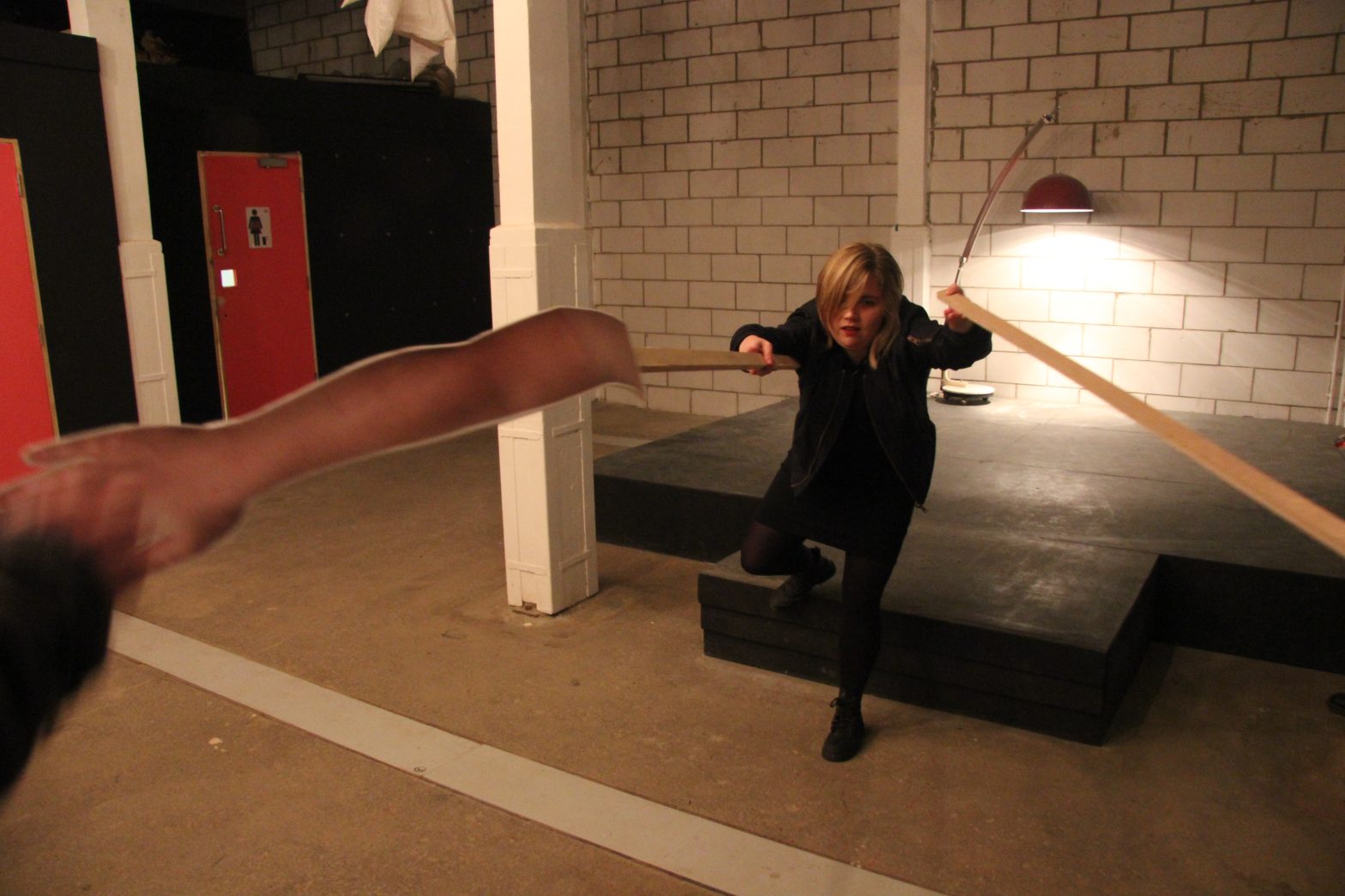In our latest update on City as Studio: Moving Image, lead artist Kate Mahony tells us how the students have been experimenting with DIY filmmaking techniques to create their own moving unique moving image works.
Throughout City as Studio: Moving Image I was determined to help the students create films using equipment that was readily available and at hand to them. I was interested in working in this way as I wanted the students to see that making an exciting piece of work does not require expensive camera equipment, but rather to understand the rules of the medium. I also find that limiting themselves to creating on their smartphones allowed the students to be more experimental and risk-taking with their ideas as they cannot rely on a ‘movie’ camera to do all of the work for them. This led me to decide that all of the films would be shot on smartphones and edited using free software to make the process as accessible as possible.
In workshop 1: The Grammar of filmmaking we focused upon the traditional rules for how to structure and shoot a film. From establishing shot sizes and their implications to camera movements and angles we then watched and re-created a short scene from Maya Deren’s Meshes of the Afternoon, 1943, one of the most influential works in American experimental cinema and film. Breaking this non-narrative film into a story board, we created a shot list to re-perform the scene with props available to us in the classroom.
In workshop 2: Point of View (P.O.V) – Surveillance we watched examples of how and when ‘point-of-view’ is used in film. Looking at both experimental and popular culture references, we broke down each into ‘subjective’, ‘objective’ and ‘inanimate’ points of view from physical objects. The students then had to shoot a short scene exploring these different perspectives using DIY steady cams constructed from crash helmets and welding masks. The objective was to get their phone camera lens as close to their eye level as possible. The students then were introduced to simple editing techniques on Da Vinci Resolve, a free editing software to upload and organise their footage onto a timeline.
In workshop 3: Actions, Objects, Interiors and Exteriors the students looked into how artists have used the camera to work out performances with objects and environments. From Bruce Nauman’s studio experiments to Miranda July’s films, using a live feed from their phones to a computer monitor (so they could see themselves) the students used the ‘Rule of Thirds’ to create a one-minute performance to camera. They were tasked to take an everyday action or movement and alter it through changing its speed, duration, repetition or adjusting the camera angle. The students then looked at various smartphone lenses that can be attached to their phones to help them explore interiors and exteriors of objects from their bags and coats to their classroom through using macro, telephoto, fisheye and super wide lenses.
In Workshop 4: Interacting with your Environment /Intervention the students had to choose a public site to create a small intervention or interruption using some of the techniques they had learnt making a short film. After visiting Penny Woolcock’s exhibition Fantastic Cities at Modern Art Oxford, the students began to plan their final films, deciding upon the concept, site, shot list and roles within the DIY film crew they were going to take. The groups were encouraged to choose from two of the four workshops they had completed to take forward into their final films. The groups chose a vast range of sites to shoot in from Cowley Road, Gloucester Green Market, the Oxford City Centre’s Cornmarket Street to Glenville Road, shooting with a professional cameraperson Rachel Dowle and myself. The students then had the opportunity to go through their footage with musicians Poppy Tibbets (MX World), Chris Hopkins (Permanent Slump Records) and Oran Lynch to learn about how sound can influence the reading and atmosphere of their films. I am extremely impressed and proud with how all of the Schools have approached the City as Studio brief in playful and meaningful ways and I am excited to see the final films screened at Modern Art Oxford on the 27th June and the 3rd July at the Ultimate Picture Palace in Oxford. Written by Kate Mahony, lead artist, City as Studio: Moving Image.
Discover more filmmaking tips on Kate Mahony’s project YouTube channel, including this clip below which explores point of view.
Read more about City as Studio: Moving Image here.
Discover our online project gallery here.
